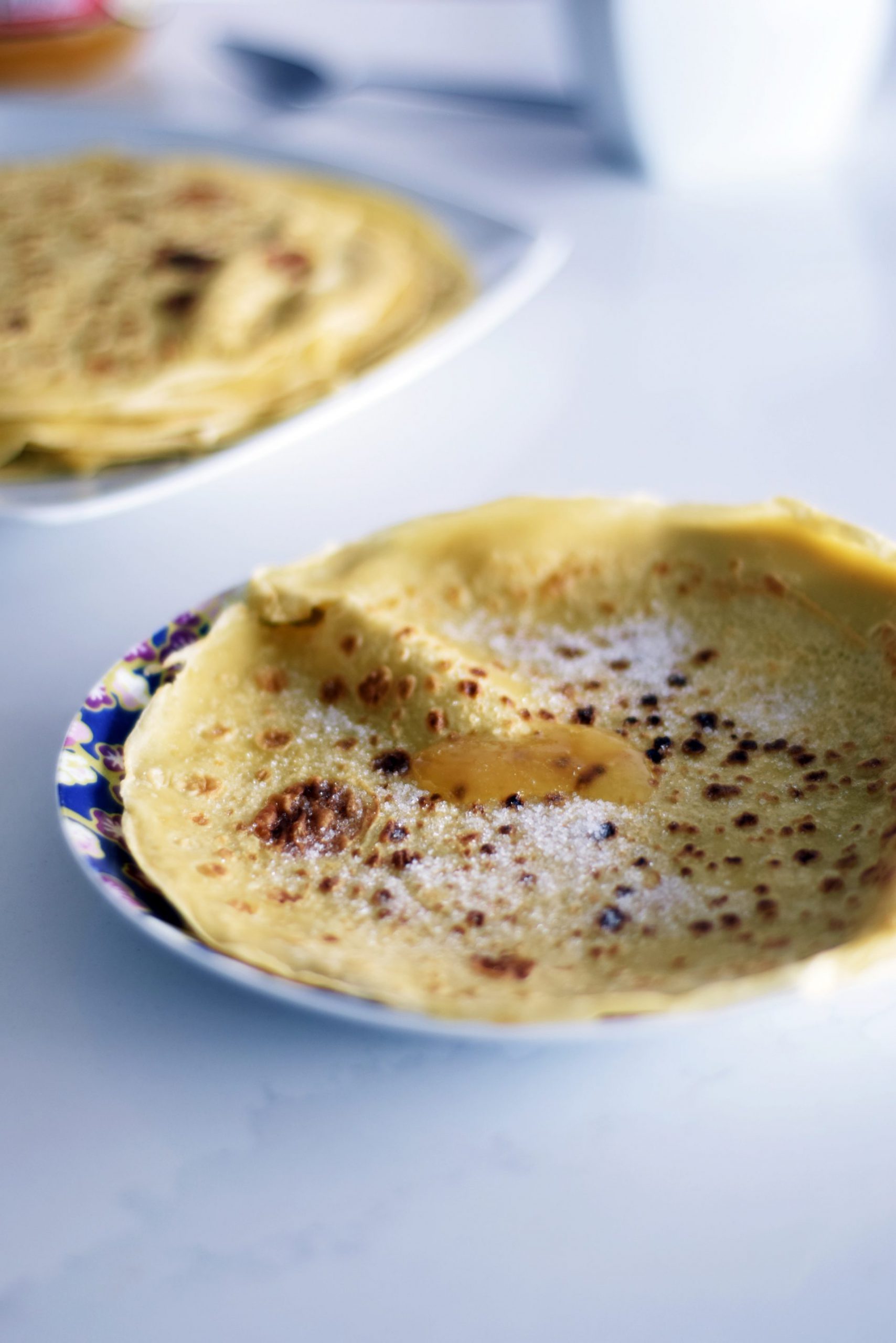
- Readers Rating
- No Rating Yet!
- Your Rating
Galician filloas are a traditional dessert from the region of Galicia, in northwestern Spain. This dish, similar to crepes, stands out for its soft texture and versatility. They can be enjoyed in both sweet and savoury versions, which makes them a delight that is adaptable to different palates. In mentta, we show you how to prepare this exquisite recipe that is a true tribute to the rich Galician gastronomy.
Origin
The recipe for filloas has its roots in ancient times, especially in the celebrations of Carnival and Lent in Galicia. Originally, they were prepared with a mixture of flour, water or milk and, in some cases, pig’s blood, known as ‘filloas de sangre’, during the slaughter of the pig. This practice made it possible to take advantage of all the resources available in rural areas. Over time, the recipe has been adapted and simplified, and today, filloas are mainly enjoyed with milk and accompanied by sweet or savoury ingredients.
Properties of Filloas
This dish is not only delicious, but also provides several nutritional benefits:
- Carbohydrates: Flour provides an important source of energy.
- Protein: Eggs and milk provide high quality protein.
- Vitamins and Minerals: They contain B vitamins and minerals such as calcium and phosphorus from milk and eggs.
- Healthy fats: Using extra virgin olive oil or butter ensures the incorporation of healthy fats.

Recipe of Filloas
Ingredients
To prepare Galician filloas, you will need the following ingredients:
- Wheat flour: 250 g
- Stock: 500 ml (you can use milk instead)
- Eggs: 3
- Salt: a pinch
- Butter or oil: to grease the frying pan
- Sugar, honey, cinnamon or savoury fillings: to taste for serving
Preparation
The preparation of this dessert is relatively simple and quick, perfect to enjoy at any time.
Preparation of the dough
- Mix the ingredients: In a large bowl, beat the eggs and add the milk (or water/broth). Add the sifted flour and a pinch of salt, and mix well until you have a smooth, lump-free dough.
- Rest the dough: Let the dough rest for at least 30 minutes so that the ingredients are well integrated.
- Heat the pan: Grease a non-stick frying pan with a little butter or oil and heat it over medium-high heat.
- Pour the butter: Pour a ladleful of batter into the hot pan and turn it quickly so that the batter covers the entire surface evenly.
- Cooking and turning: Cook the filloa until the edges begin to brown and the bottom is golden brown. Then carefully flip and cook on the other side until golden brown.
- Repeat the process: Repeat the process with the rest of the dough, greasing the pan as necessary.
- Sweet version: Sprinkle the filloas with sugar, honey or cinnamon. You can also fill them with jam, chocolate cream, whipped cream or fresh fruit.
- Savoury version: Fill the filloas with chorizo, ham, cheese, turnip greens or any other savoury ingredient of your choice.
Tips for Improving your Filloas
- Variety of flours: Try different types of flour, such as wholemeal or spelt flour, to vary the texture and flavour.
- Personal touch: Add a little aniseed liqueur or lemon zest to the dough to give it a unique flavour.
- Presentation: Serve the filloas on a decorative plate and accompany them with a scoop of ice cream or a fruit sauce for a more elegant presentation.
Galician filloas are a perfect example of Galicia’s rich culinary heritage. This recipe combines simple, high-quality ingredients to create a versatile and flavourful dessert. Perfect for sharing at a family meal or with friends, filloas are a reminder of how simplicity and tradition can lead to the best gastronomic experiences. In addition, filloas are versatile and can be adapted to different tastes and preferences, allowing you to experiment with different ingredients and presentations. Visit mentta’s blog for more gastronomic articles and discover new recipes that celebrate the diversity and richness of Spanish cuisine.
